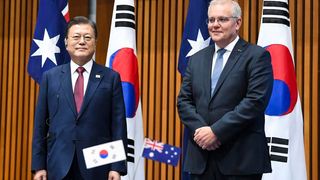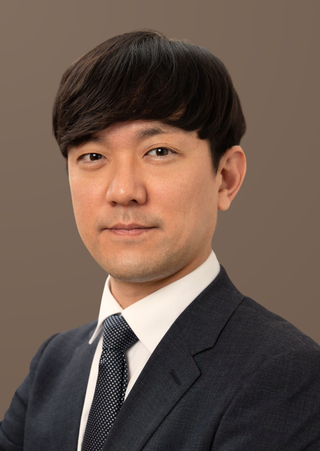After years of sporadic interest from both sides, this week’s Morrison-Moon summit was a reminder of the under-appreciated importance of Australia’s relationship with South Korea.
With the pandemic far from over, global supply chains under strain, and United States-China competition intensifying, Australia and South Korea can help each other in the challenges that lie ahead.
President Moon Jae-in’s visit to Australia sends a calculated signal to both the US and China. The Biden administration has made clear that its primary security focus in the Indo-Pacific region is not the North Korean nuclear threat but strategic competition with China. This has left the Moon administration increasingly at odds with the US focus on deepening integration with allies and partners to compete with China.
By investing the time and effort to visit Australia, Moon is highlighting South Korea’s strategic value with a different, but equally important, US ally.
In north-east Asia, the US has primarily sought closer trilateral security co-operation between South Korea, Japan and the US, long predating the rise of China. That co-operation has been hampered by deep bilateral disputes between Seoul and Tokyo.
By investing the time and effort to visit Australia, Moon is highlighting South Korea’s strategic value with a different, but equally important, US ally. While South Korea has been less vocal in its strategic posture, its rapid defence build-up and the increasing tempo of bilateral naval, air force and infantry exercises with Australia shows it is stepping up its regional engagement in its own way.
China’s coercion of Australia and the deterioration in US-China relations has not dissuaded Moon from visiting. The Moon administration has maintained productive relations with China to gain its support on dealing with North Korea. His push for an end-of-war declaration to the Korean War depends on Chinese support which explains his reluctance to boycott the Olympics.
No need for fanfare
With the pandemic continuing to disrupt international travel and South Korea grappling with a deadly fourth wave of infections, Moon could have easily deferred the visit and avoided any diplomatic risks.
As the first official visit to Australia by a South Korean leader in 12 years and the first by a foreign leader since the pandemic ahead of Joe Biden and Japan’s Kishida Fumio, his presence is loaded with symbolism. But even as Moon emphasised closer defence co-operation with Australia has nothing to do with China, the key outcomes of the summit suggest otherwise.
Even as Moon emphasised closer defence co-operation with Australia has nothing to do with China, the key outcomes of the summit suggest otherwise.
The economic agenda was squarely focused on strengthening supply chain resilience, especially in critical minerals, as well as co-operating on a renewable energy transition. The growing transportation crisis in Australia and South Korea over diesel exhaust fluid shortages caused by China’s export bans is a reminder of the weaknesses in current supply chains and dependence on China.
While China remains both countries’ largest trading partner, its willingness to use economic coercion adds real urgency to this agenda.
The finalisation of the $1 billion contract for South Korea to build self-propelled howitzers in Australia also advances industrial co-operation and sets a solid foundation for future projects. It strengthens their commitment to sovereign defence industries in partnership with each other and builds on their respective alliances with the US.
As with previous Australia-South Korea leaders’ summits, economic co-operation comes with closer security co-operation. In 2009, it was the global financial crisis that led to Kevin Rudd and Lee Myung-bak’s action plan for security co-operation. In 2014, it was Tony Abbott’s desire to complete a free trade agreement with Park Geun-hye that led to a blueprint for defence co-operation.
Now, it is about building economic resilience and sovereign capabilities for an increasingly uncertain future. With only three months left in Moon’s single-term presidency, the visit was always going to be limited in its scope for ambitious policy changes and much will depend on who succeeds him. But that is similarly the case here as Australians head to the polls next year.
Closer co-operation between Australia and South Korea does not need great fanfare or hyperbole if it achieves the strategic resilience that both countries seek.






